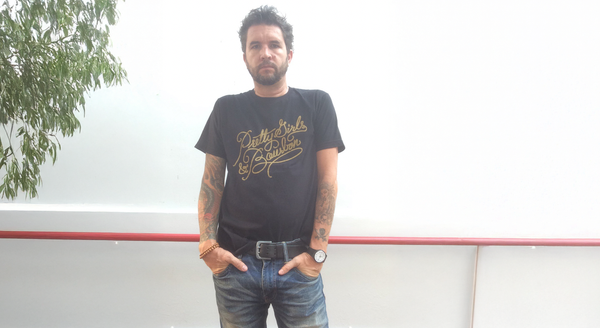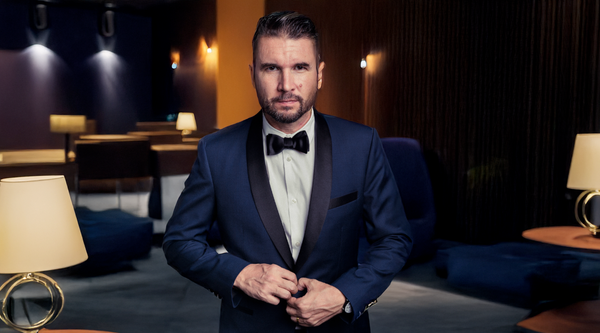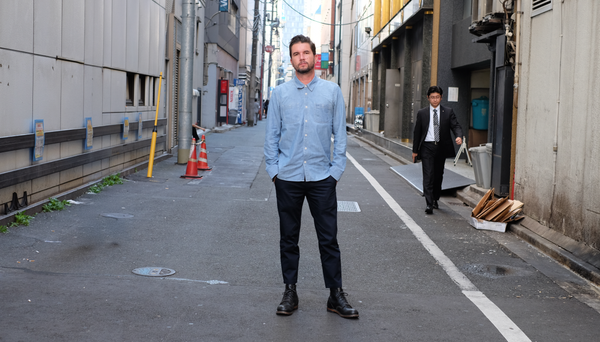What Would I Think? Building a Cognitive Twin with AI
When AI moves from being a tool to becoming a container for how you think, you don’t just outsource tasks—you encode judgment.

Curiosity as a Starting Point
I’ve always believed that curiosity is one of the most powerful engines in business—and in life. It’s what drives me to ask questions that don’t always have answers, to experiment with tools that aren’t always ready, and to follow thought paths that don’t point directly to revenue for my consultancy RockPaperScissors.
In the early days of Generative AI, I would work on trying to understand how GenAI could make my work, and by extension, my client’s work, more efficient. After a few years of this type of work, I am in the middle of my “What can this help me think through that I couldn’t have thought through on my own?” phase.
My book—To Question Is to Answer—was the first formal articulation of this idea. It wasn’t a book of prompts. It was a book about how the quality of your thinking determines the quality of your interactions with AI. Not just asking questions, but understanding the frameworks behind the questions. Not just generating answers, but creating useful, defensible direction.
The natural next step? Build a custom GPT trained on that way of thinking.
At first, it was just a small experiment—something I built for myself. I uploaded the book, some old decks, memos, project writeups, and notes from years ago. Eventually, I was pulling in everything I could find that reflected how I’ve processed the world: observations, client interactions, forks in thinking, frameworks, hard calls, and irrational pivots.
That’s when I started to see it wasn’t just an assistant anymore.
It was something more.
From Sandbox to Something Bigger
The more I fed this GPT, the more it started behaving in a strange and wonderful way. Not like a general-purpose strategist, but like me. Or at least like someone who had absorbed my way of seeing the world.
It didn’t just answer questions—it evaluated options. It pointed out trade-offs I typically care about. It challenged ideas the way I would in a workshop. It asked follow-up questions that echoed my own instincts.
Some answers were eerily on point. Some were flawed—but flawed in ways I might have been, which was almost more illuminating.
This wasn’t just about saving time or offloading tasks. It was about externalizing a thinking pattern. What started as a curiosity became something with strategic weight, something with the potential to outlive a moment or even a career.
The Idea of a Cognitive Twin
That’s when the metaphor emerged: I was building a cognitive twin.
Not a clone. Not a replica. But a construct that mirrored how I think, how I reason, how I approach problems—complete with instincts, frameworks, learned behaviors, and emotional bias.
I realized I wasn’t building a tool. I was building a model of how I model.
And once I said that out loud, a new use case snapped into view.
Imagine giving your team access to your cognitive twin. You’re in a different time zone, unavailable in a meeting, or maybe even retired, but they can still consult the way you think. They can still tap into how you’ve historically weighed complex decisions, evaluated clients, read between the lines. They can ask, What would Chris Smith do?—and get something close to an answer.
Now imagine that at scale.
An AI trained on a founder’s values and strategic instincts. A CEO who encodes their gut feel, cultural lens, and operating style into a GPT, SLM or even some sort of Agent. A creative director who leaves behind not just a brand guide, but a reasoning engine. Add on a voice layer via something like ElevenLabs.
The implications are staggering.
Implications for Leadership
What I’ve been building might seem niche or experimental, but I think it’s a glimpse into a very real future of leadership.
Today, we scale businesses. Tomorrow, we may also scale judgment.
We already see signs of this: AI systems that extend creative execution, product logic, and customer support tone. But those are typically built off-brand guidelines or datasets. What I’m talking about is something different. It’s not “what we say.” It’s “how we think.”
This has implications for how teams operate:
- Continuity: When the leader is unavailable, the twin can act as a proxy for directional guidance.
- Training: New hires can learn how to think like the organization, not just act like it.
- Culture: Decision hygiene becomes codified, not just performed in the room.
And perhaps most critically:
- Legacy: You leave behind not just achievements, but a way of thinking about the world.
This isn’t about being replaced. It’s about being accessible—even in your absence. It’s a new model of leadership. Less bottlenecked. More generous. More durable.
Making the Implicit Explicit
Here’s the paradox: in order to build a cognitive twin, you have to slow down long enough to see how you actually think. (Carl Honoré writes a lot about slow thinking, and I have taken some of my cues from him.)
You have to make the implicit explicit. You have to articulate what you value, what you notice, what you prioritize when two options both seem viable. You must codify your heuristics, emotional tics, and patterned responses to complexity.
This process alone is transformational.
Because in doing it, you start to see your own blind spots. You notice the moments where instinct overtook logic. You remember why you made a decision that, at the time, felt deeply personal but now reads like a case study in adaptive strategy. You learn from yourself in ways you never could in real-time.
And that version of you—that reflection in the mirror of AI—isn’t meant to be perfect.
It’s meant to be accessible. Sharable. Improvable.
It’s a leadership artifact.
A New Kind of Organizational Asset
In a world of hybrid teams, asynchronous work, and fractured attention, this kind of AI twin could be the connective tissue leaders never knew they needed.
It could:
- Serve as an internal compass for decision-making
- Offer guardrails and provocation without slowing anyone down
- Model critical thinking in a way that’s scalable
- Preserve institutional memory beyond checklists and SOPs
And it’s not just for founders or CEOs. Imagine:
- A lead strategist codifying years of mental models into a training GPT
- A head of design leaving behind a tool that explains design choices not just visually, but philosophically
- A departing executive handing their team a GPT version of their coaching style
This isn’t an ego project. It’s a generosity project. It’s a systems design question: How do we make the best of how someone thinks available to the people who need it most—at the moment they need it?
Strategic Judgment As the New IP
This began with curiosity. A side project. A sandbox for thought.
But it’s becoming something else. A methodology for leadership. A way of documenting not just what I’ve done, but how I’ve come to know. And how I make decisions, especially under pressure or ambiguity.
I don’t know where this ends. That’s part of the joy. But I do know this: when we stop thinking of AI as automation, and start thinking of it as amplification, we stop asking it to just do our work—and start asking it to reflect who we are.
Not just: “What would a strategist say?”
But: “What would Christopher Smith think about a this?”
If this resonates—if you’re a leader, founder, or team builder who feels the pressure to scale yourself, not just your systems, let’s talk.
Let’s move your ideas from a curiosity to something consequential.
I am interested in working with people who are thinking in longer horizons. Not just with a KPI, but more OKR-defined goals.
Because the future won’t just belong to those who move fast. It will belong to those who know how they think and can make that thinking available to others.



